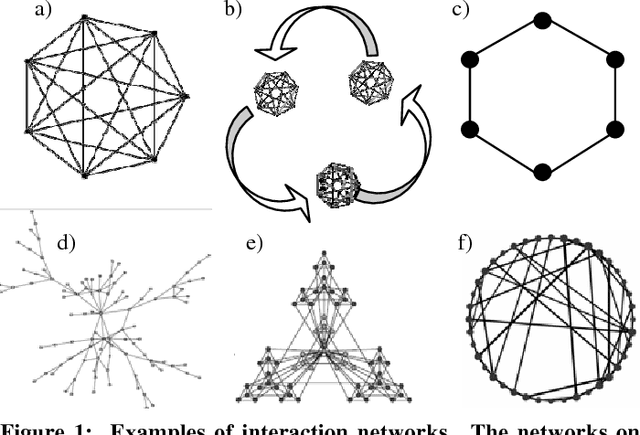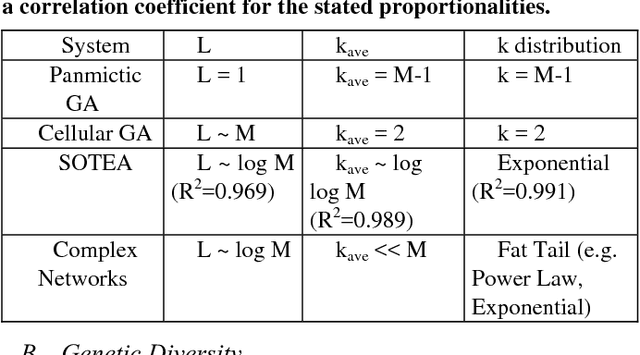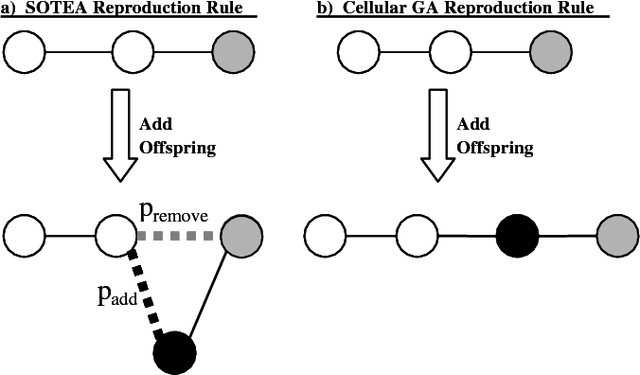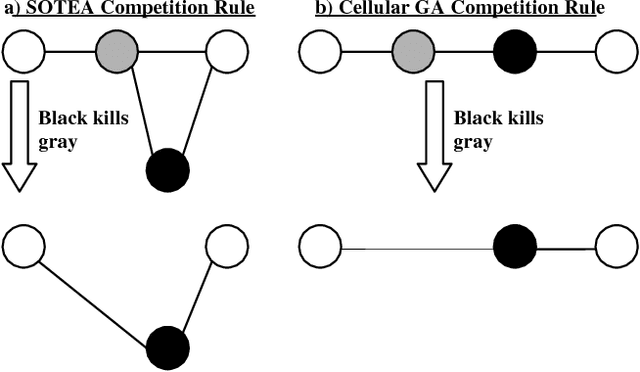Q. Tuan Pham
Spontaneous organization leads to robustness in evolutionary algorithms
Feb 06, 2011Abstract:The interaction networks of biological systems are known to take on several non-random structural properties, some of which are believed to positively influence system robustness. Researchers are only starting to understand how these structural properties emerge, however suggested roles for component fitness and community development (modularity) have attracted interest from the scientific community. In this study, we apply some of these concepts to an evolutionary algorithm and spontaneously organize its population using information that the population receives as it moves over a fitness landscape. More precisely, we employ fitness and clustering based driving forces for guiding network structural dynamics, which in turn are controlled by the population dynamics of an evolutionary algorithm. To evaluate the effect this has on evolution, experiments are conducted on six engineering design problems and six artificial test functions and compared against cellular genetic algorithms and 16 other evolutionary algorithm designs. Our results indicate that a self-organizing topology evolutionary algorithm exhibits surprisingly robust search behavior with promising performance observed over short and long time scales. After a careful analysis of these results, we conclude that the coevolution between a population and its topology represents a powerful new paradigm for designing robust search heuristics.
The Self-Organization of Interaction Networks for Nature-Inspired Optimization
Jul 02, 2009



Abstract:Over the last decade, significant progress has been made in understanding complex biological systems, however there have been few attempts at incorporating this knowledge into nature inspired optimization algorithms. In this paper, we present a first attempt at incorporating some of the basic structural properties of complex biological systems which are believed to be necessary preconditions for system qualities such as robustness. In particular, we focus on two important conditions missing in Evolutionary Algorithm populations; a self-organized definition of locality and interaction epistasis. We demonstrate that these two features, when combined, provide algorithm behaviors not observed in the canonical Evolutionary Algorithm or in Evolutionary Algorithms with structured populations such as the Cellular Genetic Algorithm. The most noticeable change in algorithm behavior is an unprecedented capacity for sustainable coexistence of genetically distinct individuals within a single population. This capacity for sustained genetic diversity is not imposed on the population but instead emerges as a natural consequence of the dynamics of the system.
 Add to Chrome
Add to Chrome Add to Firefox
Add to Firefox Add to Edge
Add to Edge